Glimmingehus in Skåne is the best preserved medieval castle in the Nordic region. Built at the end of the 15th century, when Skåne belonged to Denmark, the castle was an exclusive residence with everything from modern heating solutions to aggressive defence.
Table of contents
Glimmingehus in Skåne
Glimmingehus is located in Österlen in south-eastern Skåne, about 15 kilometres south-west of Simrishamn.
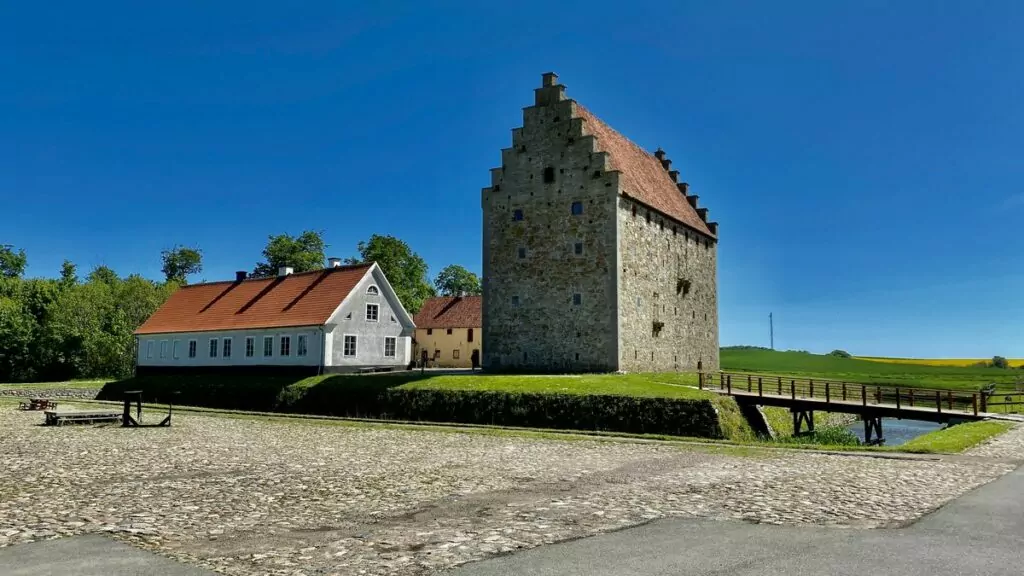
Glimmingehus - a knight's castle with luxury and death traps
Glimmingehus was built between 1499 and 1505 by the Danish knight Jens Holgersen Ulfstand, at a time when Scania was part of Denmark. Jens Holgersen was one of the Danish king's closest men and one of the greatest naval warriors of the time. He was very rich and married into powerful families to gain even more power and wealth.
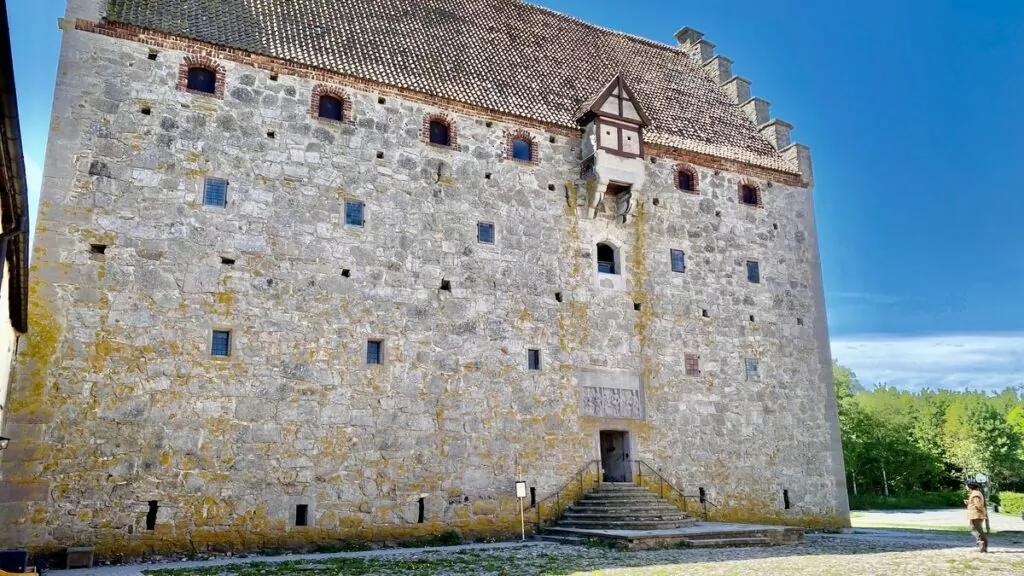
Together with his second wife, Margareta Arvidsdotter Trolle, he owned a number of castles and mansions. But Glimmingehus was something very special - a state-of-the-art knight's castle where the couple and their eight children lived a life of luxury and opulence. It featured the latest amenities in the form of hot air heating systems and 'toilets', where you did your business straight out of the high floors.
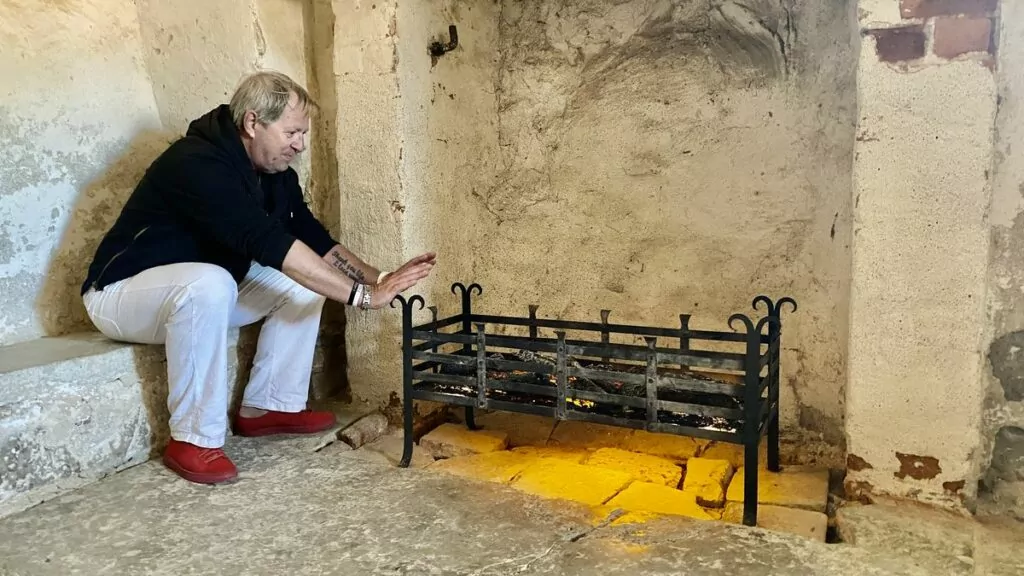
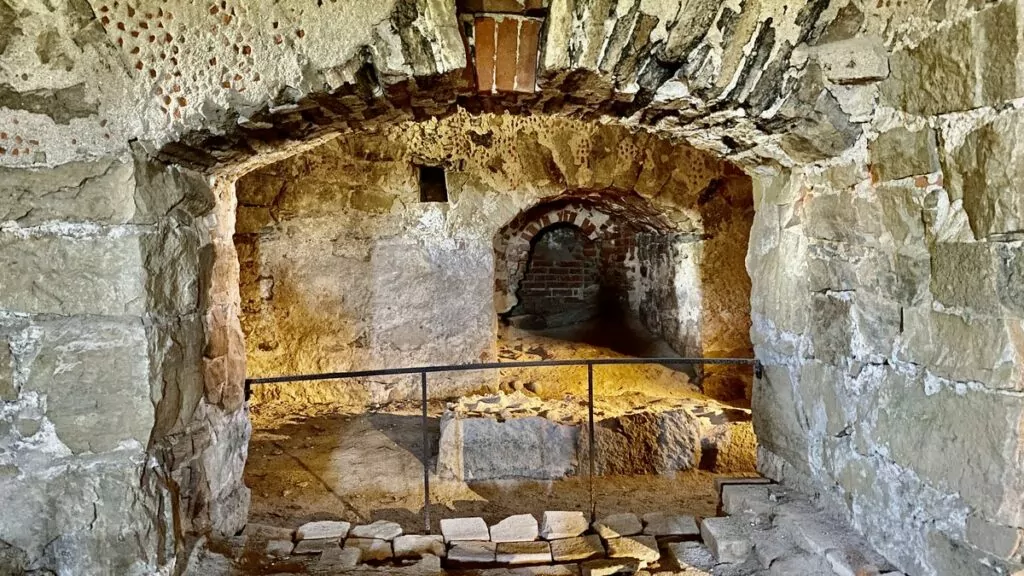
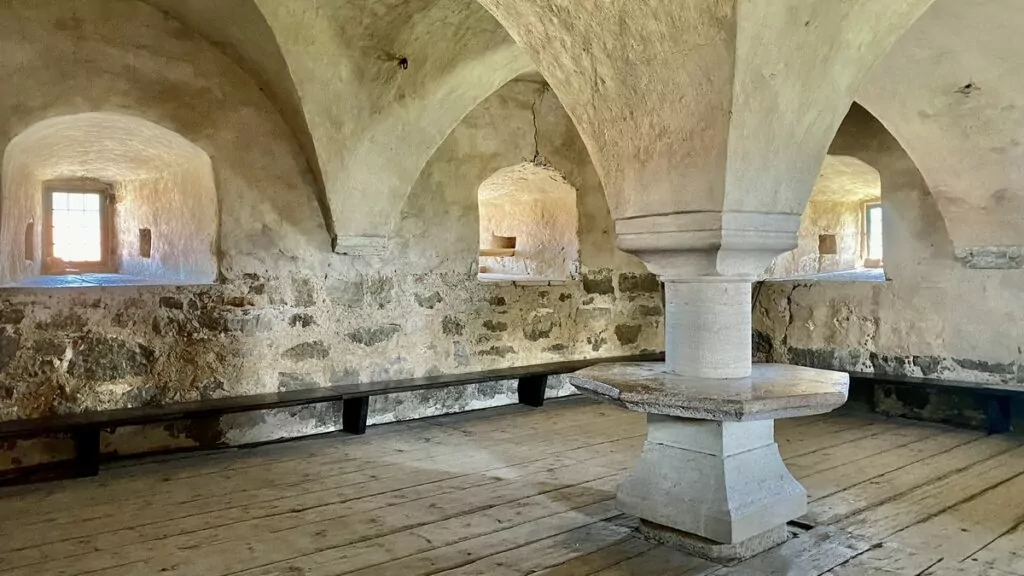
Those who were invited to a party could be served in glasses and exclusive porcelain from southern Europe. For those who were not invited, the reception could be a party. completely Other. The castle was equipped with bullet holes for firearms, trapdoors and 'scalding holes', where hot liquids could be poured over potential attackers.
Jens Holgersson lived in a time of harshness and violence, yet he was known to be harsher and more violent than anyone else. He taxed everyone he could, down to the smallest fishing hut, and had anyone who displeased him imprisoned.
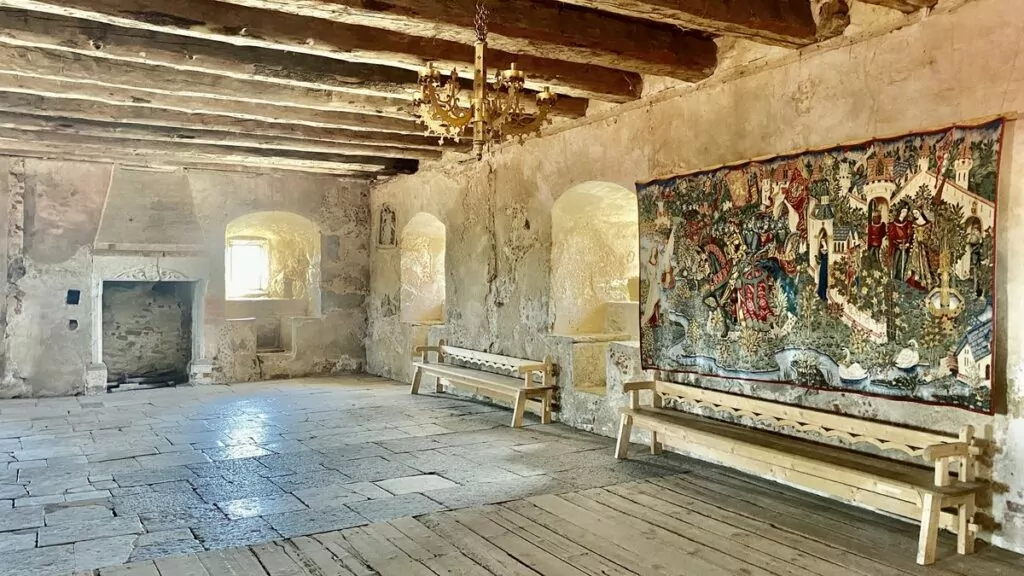
An attempt to demolish Glimmingehus
After Jens Holgersson's death, the descendants lived there for a few generations before moving to more modern buildings in the courtyard. Although the castle became obsolete, it was considered one of Skåne's most important strongholds during the Scanian War in the 17th century. In 1676, the Charles XI ordered the castle to be demolished to avoid it falling into the hands of the Danish king.
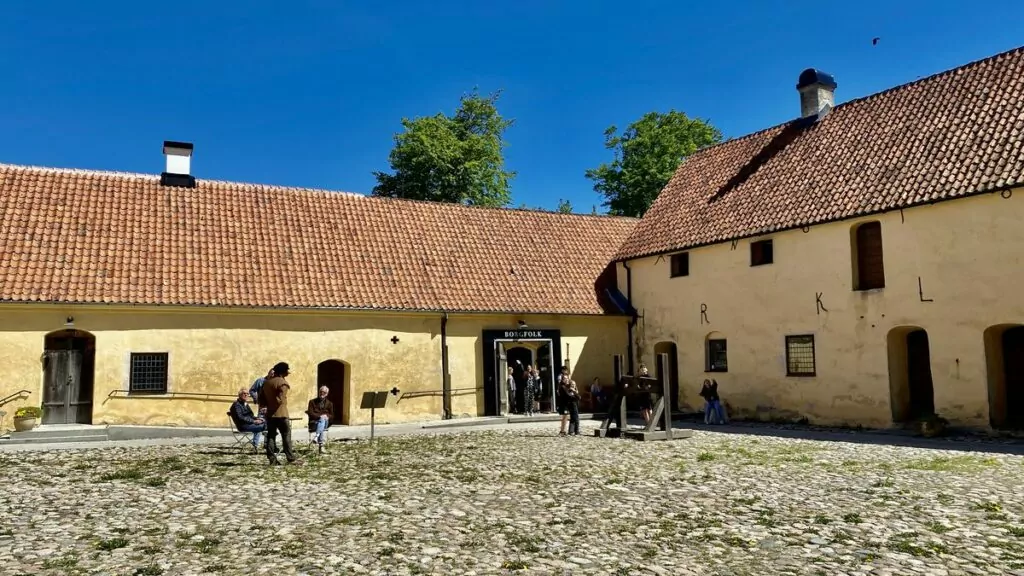
Johan Hintzke, a lieutenant colonel in the Swedish army, was commissioned to demolish the castle. He was assisted by a number of farmers with simple tools, and the work proved insurmountable. Instead, they focused on making the castle unusable by removing the doors and trapdoors.
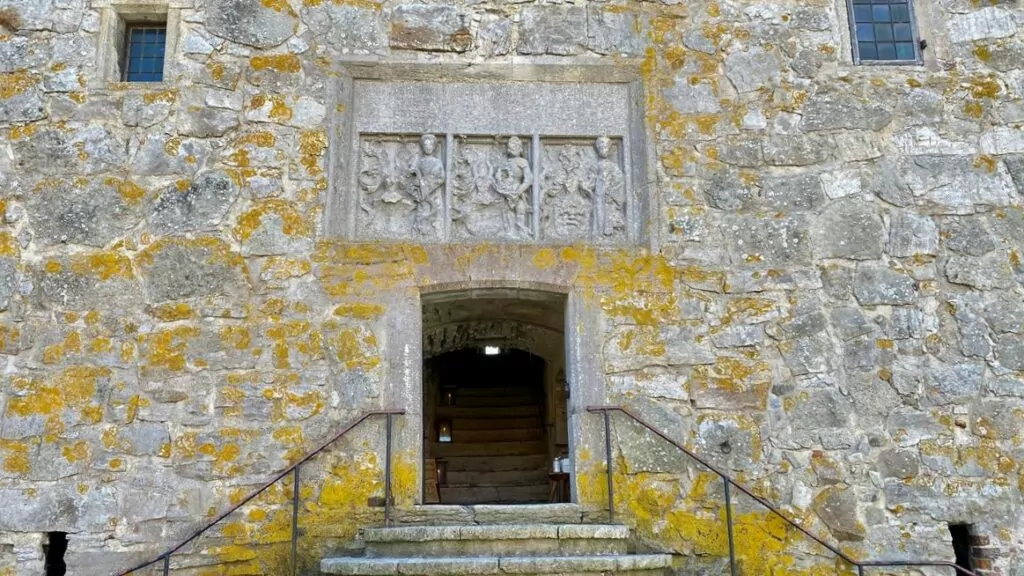
Fortunately, the castle was never demolished and still stands today. In the picture below, you can see what it is believed to have looked like in its glory days.
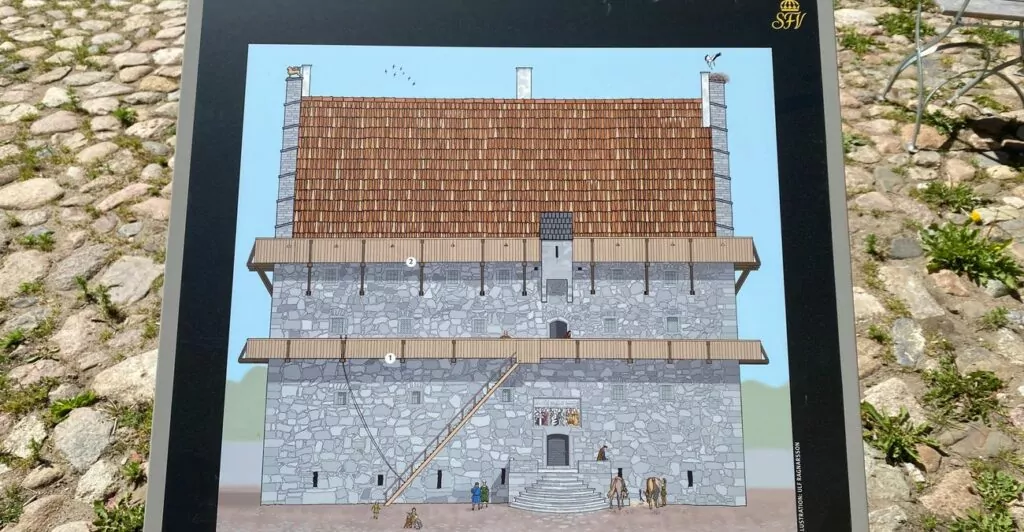
Visiting Glimmingehus
Visiting Glimmingehus provides an interesting and exciting insight into history. Currently, visits to both the area and the castle are free of charge. However, you should check the opening hours carefully as these can vary, and because sometimes it is closed to the public when schools are booked.
Sometimes there are also guided tours, but when we were here it was just free to walk around and see for yourself. Here are some photos of the "Frustugan", the most ornate room in the castle.
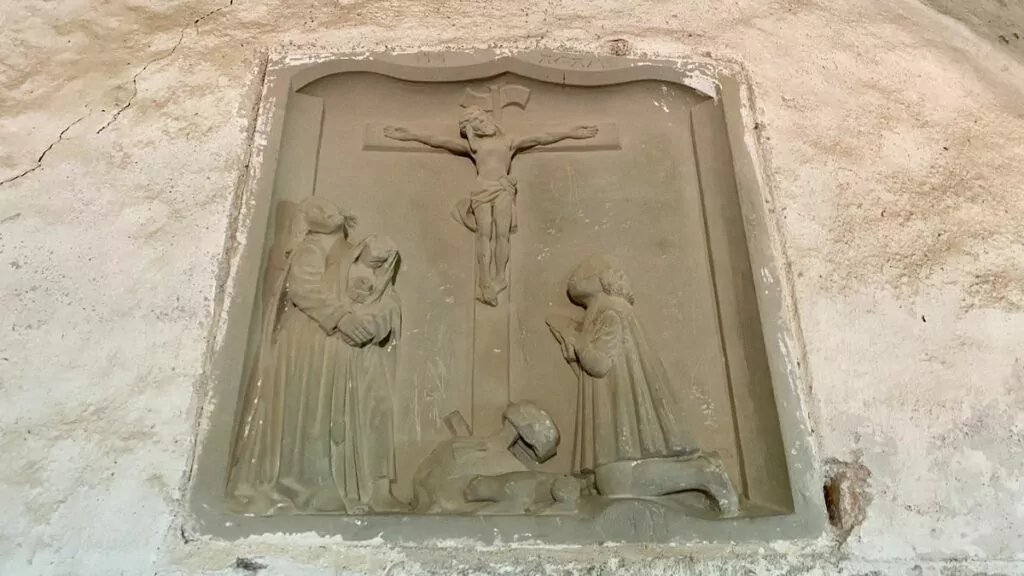
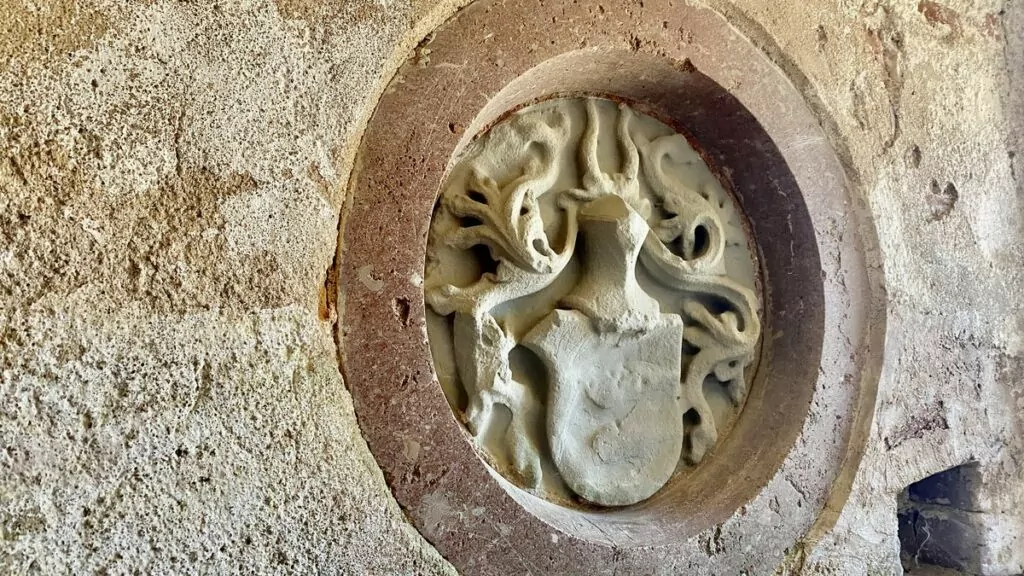
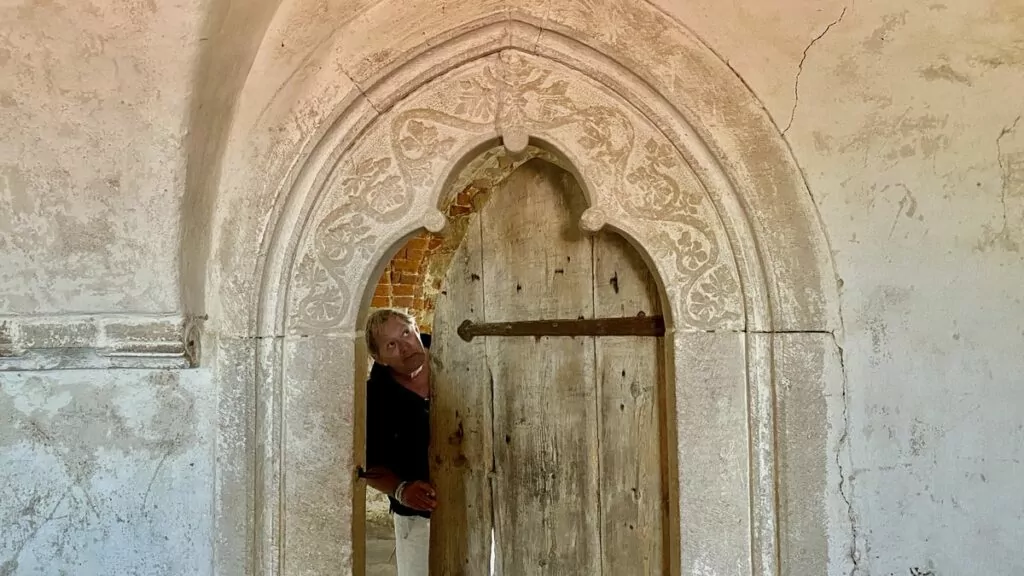
In the stairwell you will find the Giant or 'Wild Man' as it is also known. The sculpture was carved by Adam van Düren in 1500.
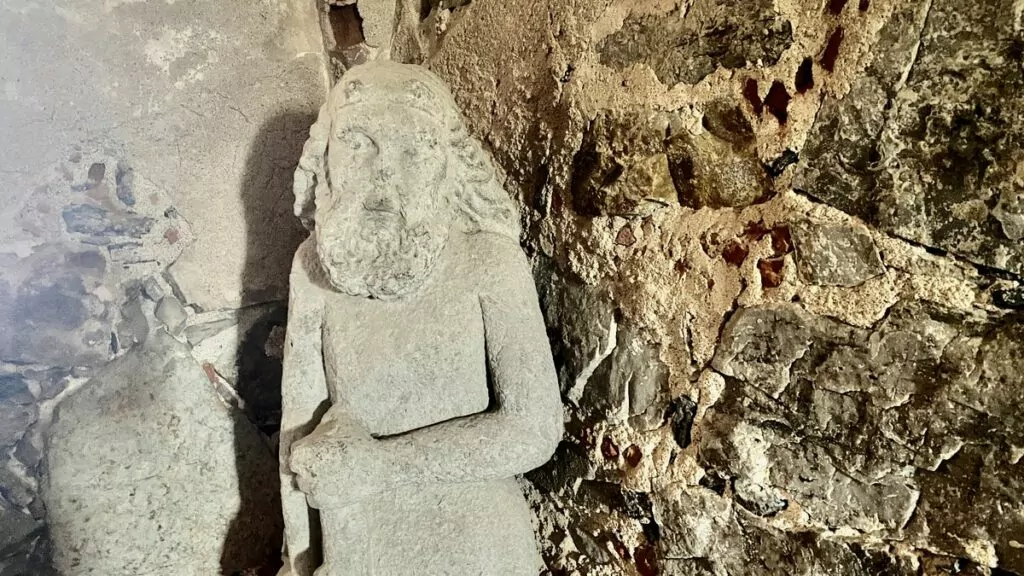
In the area outside the castle you can see a herb garden, with things that may have been grown at Glimmingehus in the early 16th century, and a building that has been used in various educational contexts.
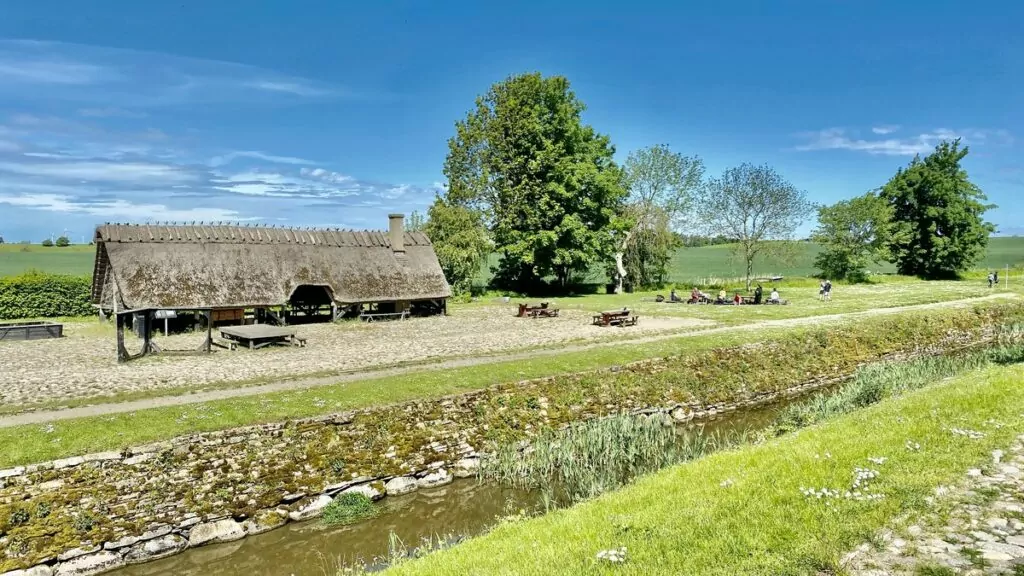
Museum
There is also a small museum in the courtyard and this was interesting to visit. It consists almost only of texts on walls, and yet they manage to capture you with stories about various important people in the history of Glimmingehus.
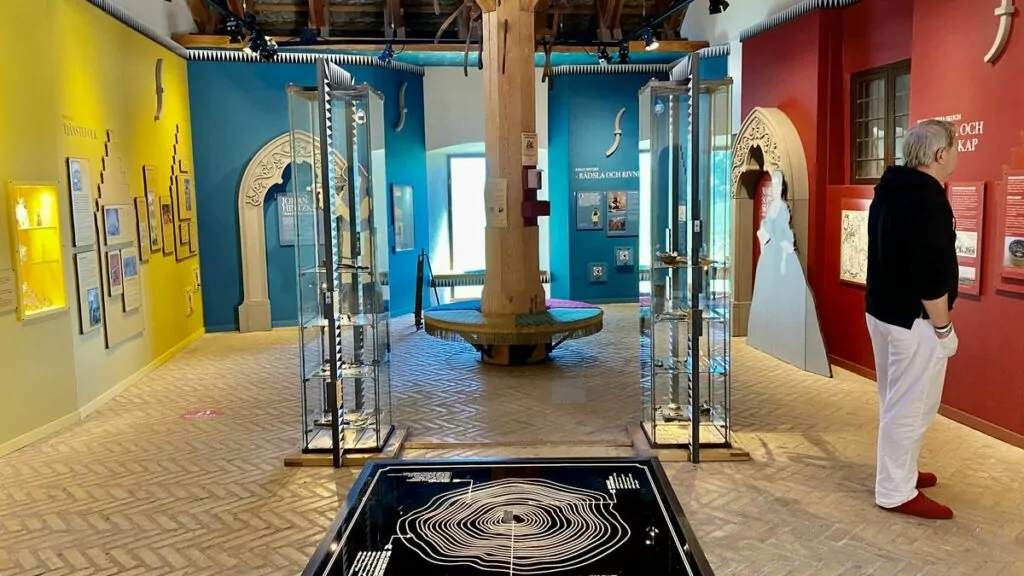
Here you can read about several different human destinies, such as the noblewoman Maria Sofia Skogh, who spent 12 years in a camp in Siberia. You can also read about "The Lady of Glimmingehus" who was an unusual woman for her time. She was accused of mismanaging the farm and the animals, but also took an interest in history and was particularly fond of the statue of the 'Wild Man', which had to be kissed when it was passed.
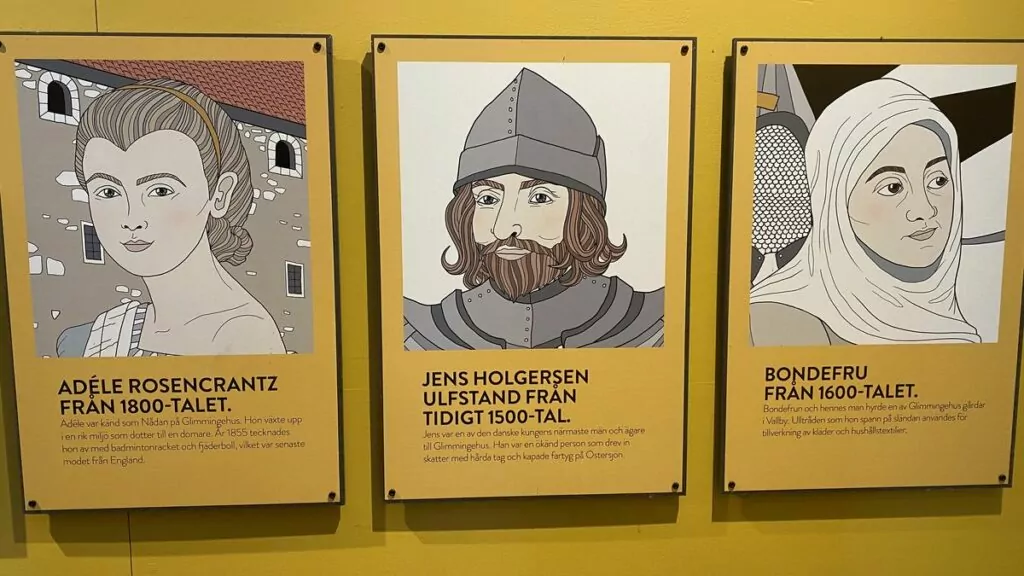
See more in the neighbourhood
In the neighbourhood of Glimmingehus, you can visit Simrishamn and Ystad. Don't miss the exciting Ales stones or the fine sandy beaches in and around Sandhammers. If you want to see even more of Skåne, you can head north to the lovely and cosy Åhus.
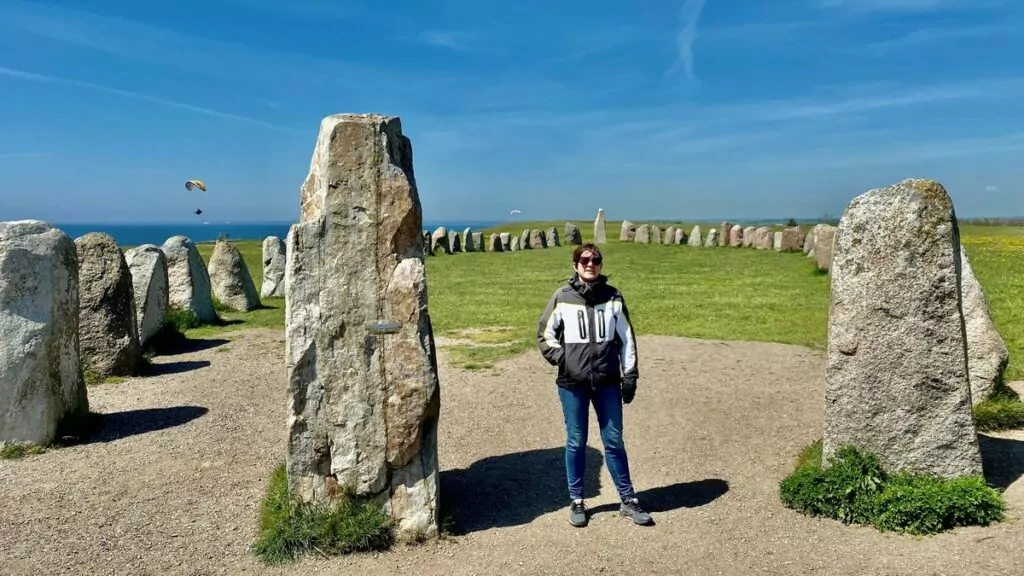
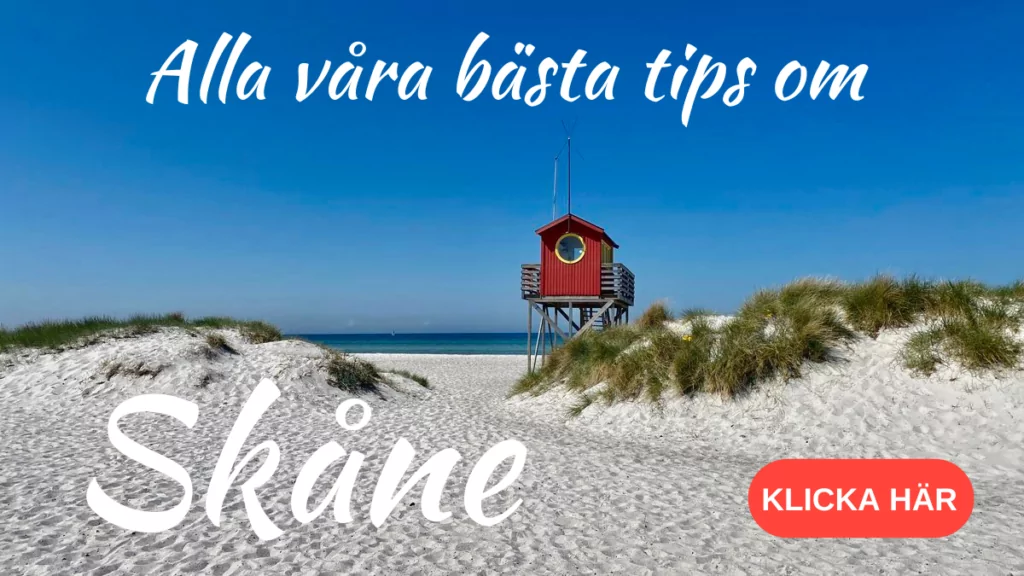
Trip to Malmö - a surprise from Peter to Helena
Writer: Helena Bergström We have made a trip to Malmö! A while ago, we declared...
An evening of music at Diggiloo in Ystad
Guest writer: Pernilla This summer, Diggiloo will play 24 concerts in 24 different cities in Sweden, in...
A day at Bongska Huset and its big sister Hotel Mossbylund
Guest writer: Pernilla Bongska The house in Abbekås is nicely located in Abbekås harbour in Skåne, near the beach...
Everyday luxury at Hotel Dannegården in Trelleborg.
Guest writers: Magdalena and Pernilla Travelling and long-distance adventures are great. Everyday luxury in your neighbourhood should...
Stationen Ystad - cosy bed & breakfast in Skåne
Stationen Ystad is a really cosy Bed & Breakfast in Skåne. Peter and his brother...
The Swedish Skåne Road - FREEDOMtravel Themed Road
Writer: Peter Bergström The Swedish Skåne Road is a themed road that takes you through Skåne,...
Things to do in Malmö - 28 sights and experiences
What to do in Malmö? This Scanian city has a lot to offer, in...
Street art in Malmö - a guide to Malmö's street art
Street Art in Malmö! It can be called street art, street art, wall paintings, murals or simply...
Disgusting Food Museum in Malmö - a "disgusting" visit
The Disgusting Food Museum in Malmö is for those who want to shudder and think "What...
With a camper in Malmö - tips on pitches and experiences
By motorhome in Malmö! We paid a visit to Sweden's third largest city with...
Things to do in Helsingborg - 20 sights and experiences
What can you see and do in Helsingborg? Helsingborg is a lovely Scanian city with...
Ramlösa brunnspark - from health resort to mineral water
Ramlösa Brunnspark in Helsingborg has a history that goes all the way back to the 17th century, when...
Fredriksdal in Helsingborg - museums and gardens
Fredriksdal in Helsingborg, or Fredriksdal Museum and Gardens, is a nice open-air museum in Skåne. Here you can...
Things to do in Ängelholm - our 9 best tips
What to see and do in Ängelholm? Ängelholm is a charming little town in Skåne...
Northeast Skåne - 6 excursions by car from Kristianstad
Writer: Helena Bergström Northeastern Skåne offers beautiful nature, charming towns and several exciting excursion destinations....
Excursions on the Bjäre Peninsula - 8 wonderful experiences
Excursions on the Bjäre Peninsula will be about today. At the risk of repeating ourselves a little ...
Kullahalvön and Kullaberg nature reserve
Kullahalvön, or Kullen as the peninsula is also called, is located in north-west Skåne. Here you will find ...
Swedish vineyards - 4 farms with Swedish wine
Do Swedish vineyards exist? Yes, they do, and Swedish wine is on the rise...
Krapperup Castle in Skåne - with castle park and coffee house
Krapperup Castle is a Scanian estate dating back to the 14th century. Today there is a beautiful castle...
Birgit Nilsson Museum - starry-eyed in the Scanian soil
Birgit Nilsson Museum tells the story of the farmer's daughter who became a world star. Sometimes reality surpasses poetry, and...
Norrviken's gardens - fantastic park outside Båstad
Norrviken Gardens, located outside Båstad in Skåne, was built at the end of the 19th century by gardening enthusiasts....
Båstad with a motorhome - are you welcome?
Båstad with a motorhome - are you welcome? Yes, you could ask yourself that. The feeling in...
Artwork Nimis - directions and interesting facts
Nimis is a fascinating artwork on the Kulla peninsula in Skåne, created by artist Lars Vilks. It...
Höganäs in Skåne - the ceramics town on the west coast
Höganäs is located in north-west Skåne, on the Kullen peninsula, and is probably for most...
Tropicarium in Helsingborg - exotic animals from around the world
Tropikariet in Helsingborg, Sweden, is an exotic indoor park that showcases fascinating animals from...
Sofiero castle and gardens - royal floral splendour!
Sofiero Castle and Castle Garden in Helsingborg offers a fantastic environment with intense greenery, splendour and...
Råå - picturesque in the south of Helsingborg
Råå is a charming old fishing village in southern Helsingborg. Today this is a picturesque coastal community...
Things to do in Landskrona - 12 sights and experiences
What to see and do in Landskrona? Landskrona is a pleasant town on the Öresund...
What to do on Ven in Skåne - 10 tips for a scenic island
What to see and do on Ven? This scenic island is located off the west coast of Skåne,...
Jakriborg in Skåne - inspired by the Middle Ages
Jakriborg is a residential area on the Scanian plain, just south of Lund, which looks like...
What to do in Ystad - 12 tips for experiences and attractions
What to do in Ystad? We have visited Ystad several times, but never so...
What to do in Lund - 16 tips for sights and experiences
What to do in Lund? This Scanian university town is characterised by students, research and youthful...
Dalby South Forest - Europe's smallest national park
Dalby Söderskog National Park is Europe's smallest national park. The nature area is located outside Lund in Skåne and is...
Culture in Lund - an open-air museum in the city centre
Kulturen i Lund is an open-air museum that extends over two blocks, right in the centre of...
Sandhammaren in Österlen - a beautiful sandy beach
Sandhammaren in Österlen is a beautiful sandy beach with soft, fine-grained sand, which has been...
What to do in Trelleborg - our 9 best tips
What to do in Trelleborg? Sweden's southernmost city has become known as the 'Palm City',...
Ales stones - an ancient mystery in Skåne
Ales stenar is Sweden's largest and best preserved shipbuilding site. The stone formation sits magnificently on a hill...
Smygehuk in Skåne - Sweden's southernmost headland
Smygehuk in Skåne is Sweden's southernmost cape. There is a small harbour, some cosy little...
Skanör - sandy beach, finger food and a blog session
Skanör is located at the bottom of southeastern Skåne and offers fantastic sandy beaches and cosy restaurants....
FRS Baltic - from Trelleborg to Sassnitz in less than 2.5 hours
FRS Baltic takes you from Trelleborg to Sassnitz in less than 2.5 hours, with its high-speed...
Kronovalls castle - a beautiful wine castle in Skåne
Kronovall Castle is a stunningly beautiful baroque castle in Österlen, Skåne. Today the castle serves as...
Kristianstad - 17 things to do and experience
Kristianstad, and the area around Kristianstad, offers everything from castles and charming farms to lovely...
Cosy accommodation in Skåne - close to nature at Cocoon meetings
In May this year we stayed one night in a fantastic cosy accommodation in Skåne....
Ivön and Bäckaskog Castle in Skåne - the hunt for the horse grave
Ivön and Bäckaskog Castle in Skåne are located just north-east of Kristianstad. We were here one...
Åhus in Skåne - a holiday resort with vodka and ice cream
Åhus in Skåne is a lovely holiday resort, which is known for its Absolut...
Absolute Home - a visit to The Åhus villa
We visited Absolut Home and The Åhus Villa in Åhus, Skåne. Here we have...
Have you visited Glimmingehus? How was your experience? Do you have any other tips on what to see and do in the neighbourhood?
Facts about Glimmingehus
- Address: Borgvägen 6, Hammenhög
- Municipality: Municipality of Simrishamn
- County: Skåne County
- Landscape: Skåne
- Location: Southeastern Skåne, about 15 km southwest of Simrishamn.
- Developer: Jens Holgersen Ulfstand
- Architect: Adam van Düren
- Start of construction: 1499
- Completion: 1505
- Owners: State Property Agency
- Trustee: Swedish National Heritage Board
- Read more: You can find more information at Swedish National Heritage Board.
Tours and activities
- Views: Tours are given at certain times, and sometimes in English and German. See the website for up-to-date information.
- Group tours: Group tours can be pre-booked.
- Museum: There are museums that tell the story of people and events in the history of Glimmingehus.
- Lectures: Lectures are occasionally given. In spring 2021, these will be given via Facebook.
- Activities: For example, sports holiday activities are organised. During the pandemic, these are organised digitally.
Services and practical information
- Opening hours: For current opening hours, see the Swedish National Heritage Board's website. Sometimes the castle is closed to others due to visiting school classes.
- Prices: Until further notice, since March 2021, entry to both the site and the castle is free.
- Shop: The museum shop offers souvenirs, coffee, ice cream and more.
- Food service: There is currently no one running Café Borggården.
- Toilets: Toilets are available.
- Parking: Free parking is available.
Finding Glimmingehus
- Car: Drive to Hammenhög. From the centre of Hammenhög it is about 5 kilometres. Follow the signs.
- Public transport: Travel by public transport must be booked in advance, via the Skånetrafiken website. The stop is Glimmingehus Borgvägen.
History at Glimmingehus
- 1250-1360: The Danish Civil War was raging, and during this time a first castle was probably built.
- 1499: The construction of Glimmingehus began, by the Danish councillor and knight Jens Holgersen Ulfstand. The master stonemason was Adam van Düren, who also worked at Lund Cathedral.
16th to 17th century
- 1523: However, Jens Holgersen Ulfstand.
- End of the 16th century: The castle stopped being used as a residence and people moved into new houses in the courtyard.
- 17th century: The castle was considered one of Skåne's strongest fortresses, and during the Scanian War the Scanian crown became concerned that the castle would be taken over and used by Danish troops.
- 1676: During the Scanian War, Charles XI ordered the castle to be demolished to prevent it from falling into the hands of the Danish king. Despite several attempts, the demolition of the castle failed. When a Danish-Dutch fleet was sighted in Ystad, the Swedes abandoned all demolition attempts.
18th century to the present
- 18th century: The castle served as a granary.
- 1924: The castle was donated to the Academy of Sciences by agronomist Nils Månsson.
- 1935-1938: Extensive restoration was carried out. Among other things, the old moats were emptied and the stone-lined edges were restored. During this time, many finds were made, such as ceramic pots, glass vessels, weapons, keys and various tools.


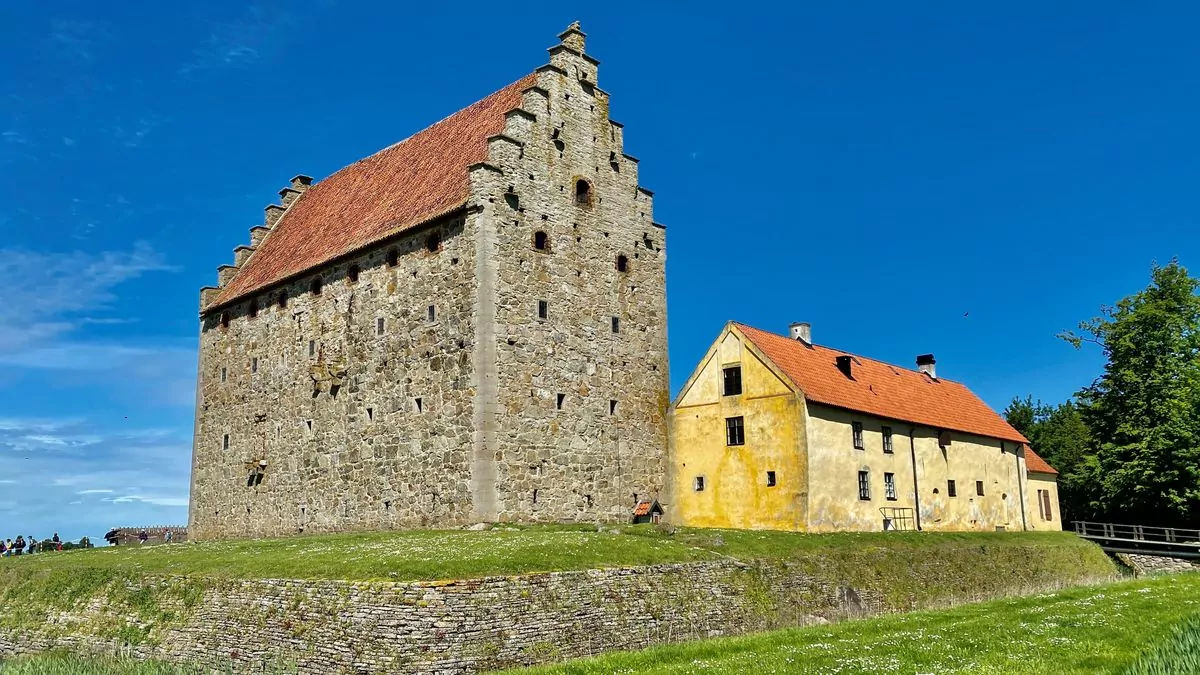






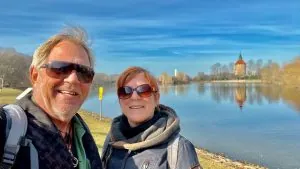

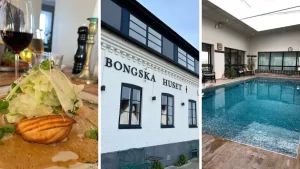
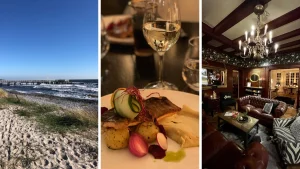
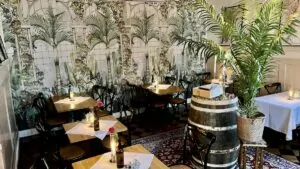
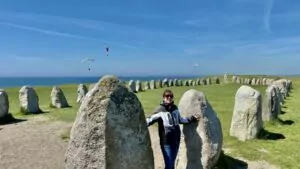
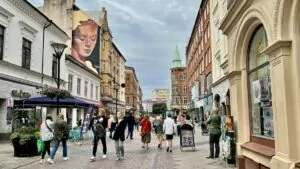


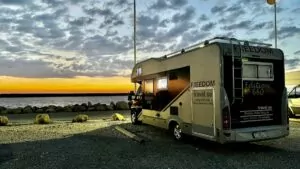
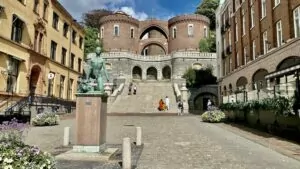
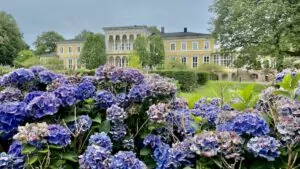
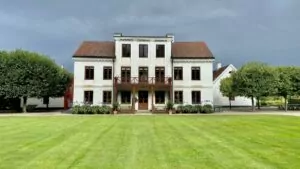
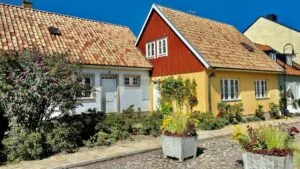
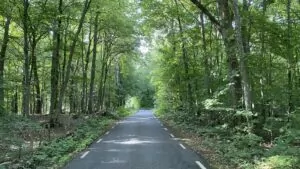
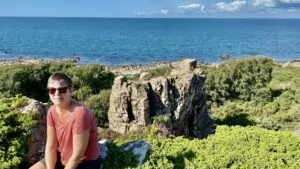
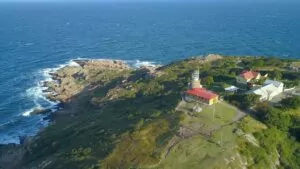

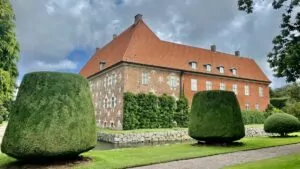
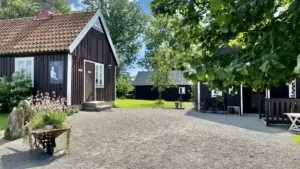
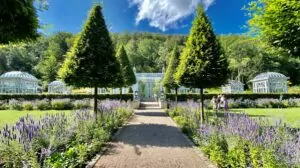
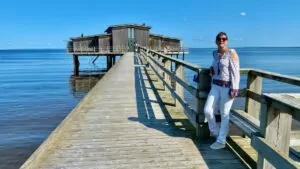
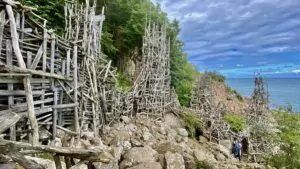
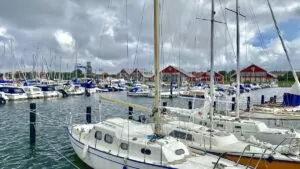

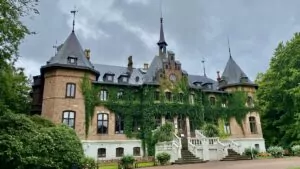
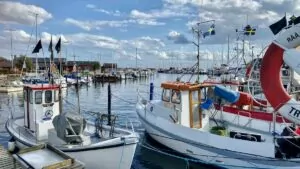
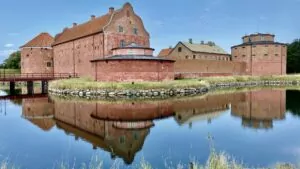
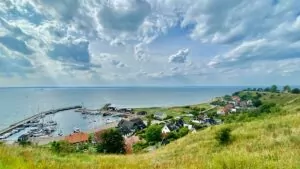
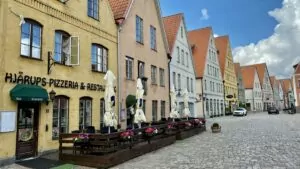
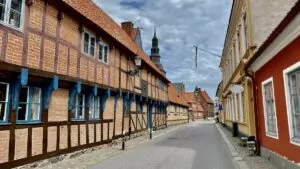
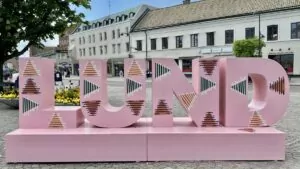
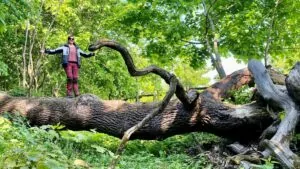
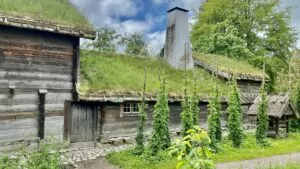
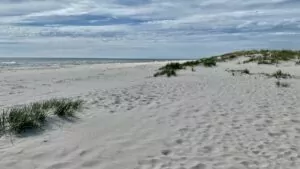
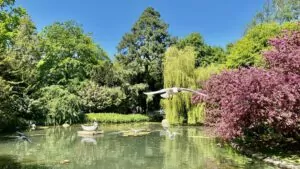
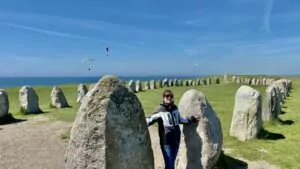
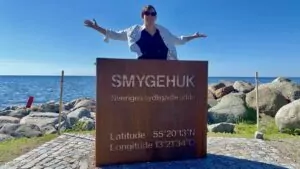
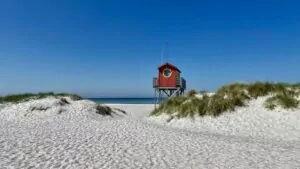

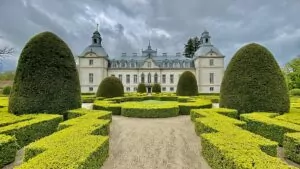
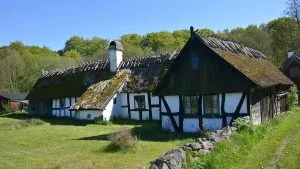
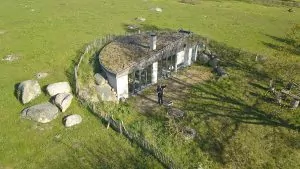
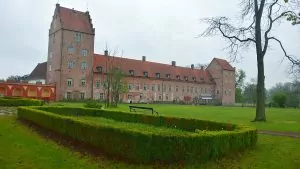
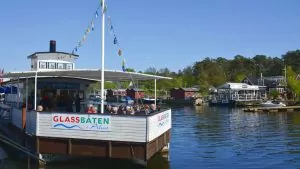
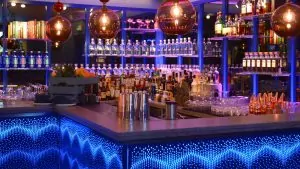
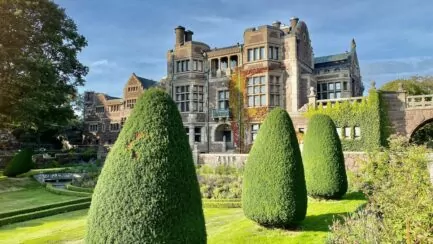
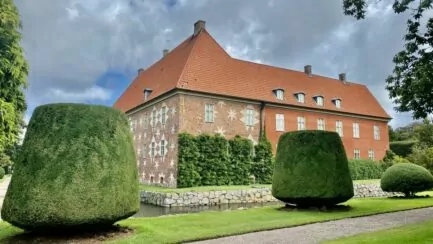



Lena+in+Wales+and+Spain says:
Interesting history and exciting houses.
I remember being fascinated when I was there, but didn't remember any of the history, good rehearsal.
I have just become a "new believer" in that part of history when the area was Danish, Swedish, Danish, Swedish back and forth and interesting how people lived under these circumstances. Different rulers, different religion etc. Also many wars.
Happy National Day tomorrow!
05 June 2021 - 10:01
Helena says:
Those can't have been easy times to live in! Agree that it is an interesting time in history!
05 June 2021 - 22:22
4000mil says:
I was there in the 90s. Still remember it as very interesting. And an impressive house!
05 June 2021 - 10:48
Helena says:
Fun! Yes, an interesting place indeed!
05 June 2021 - 22:22
BP says:
What a strange yet impressive castle. I spontaneously thought "a room with a view", even though there were not many windows. An intriguing building.
05 June 2021 - 19:49
Helena says:
A bit different, I agree! "Just" a house and yet powerful!!!
05 June 2021 - 22:23
Lena - good for the soul says:
Have heard about the house, but never been there. Never heard the story so it was interesting! How brutal it could be in those days!
Hug Lena
23 June 2021 - 5:33